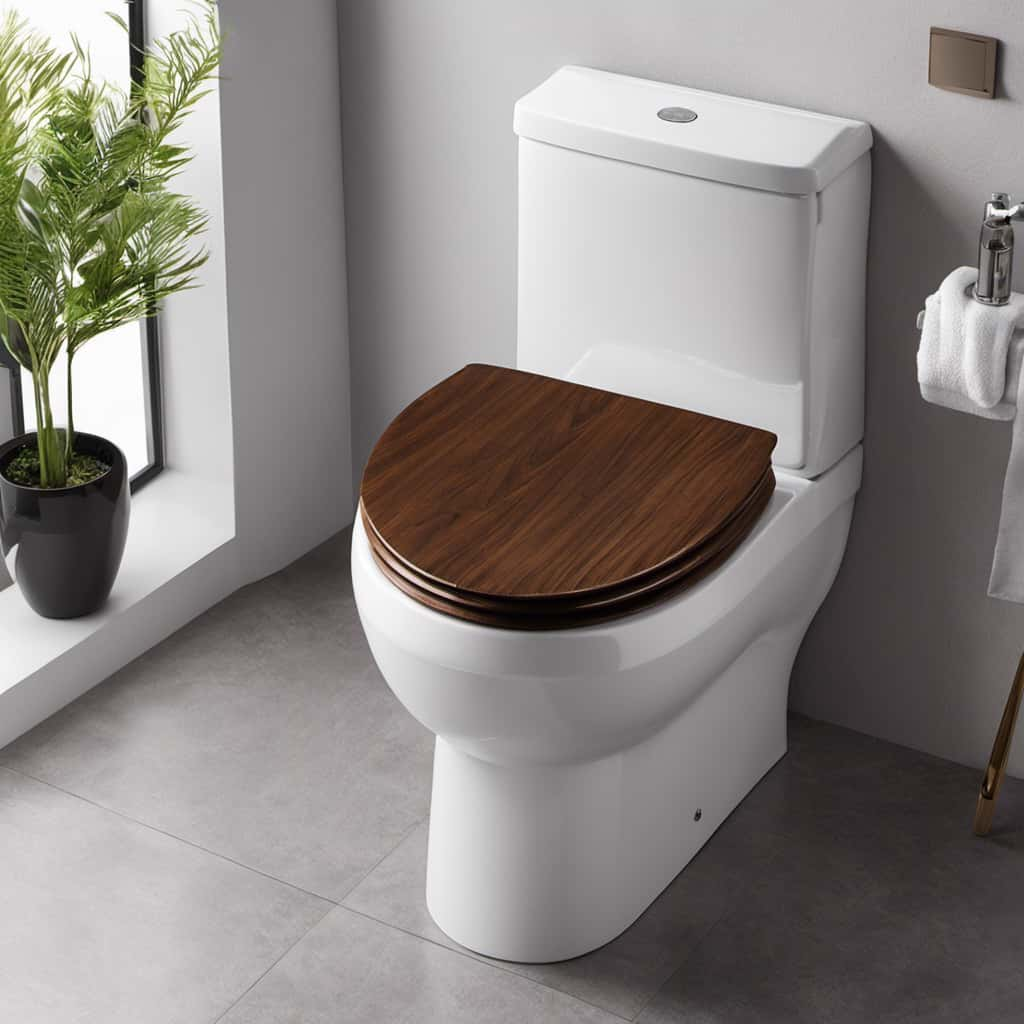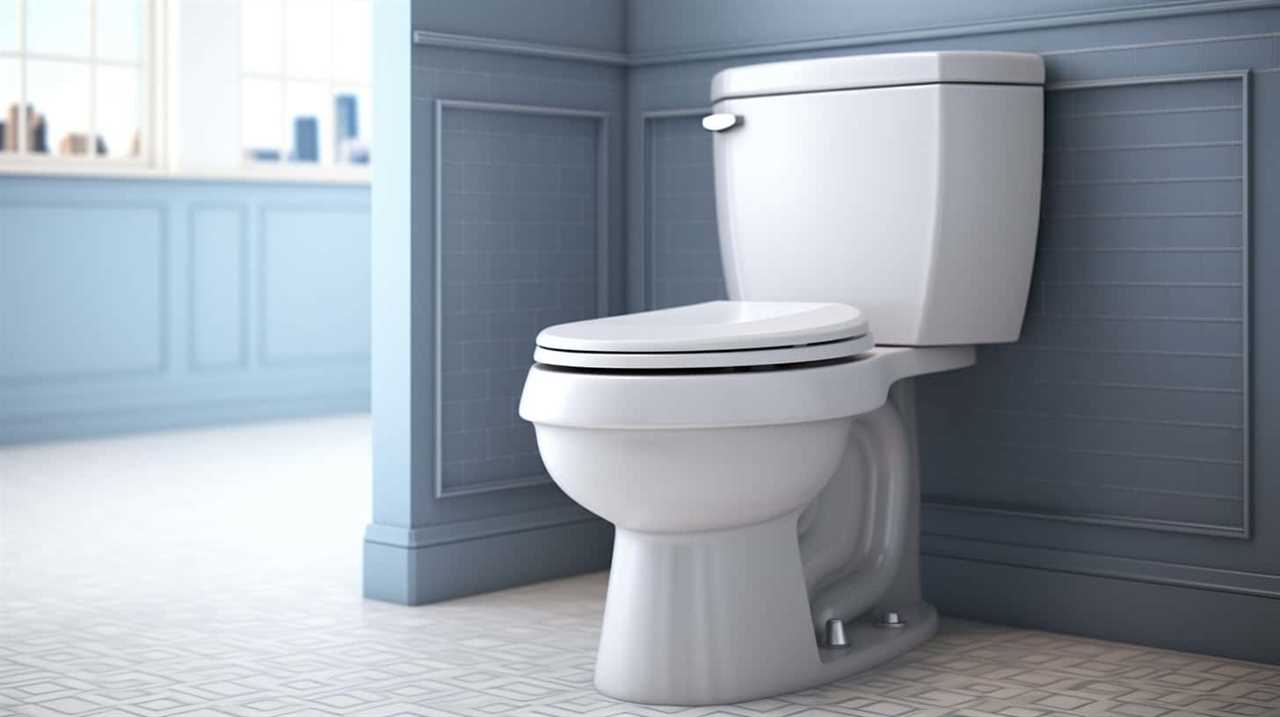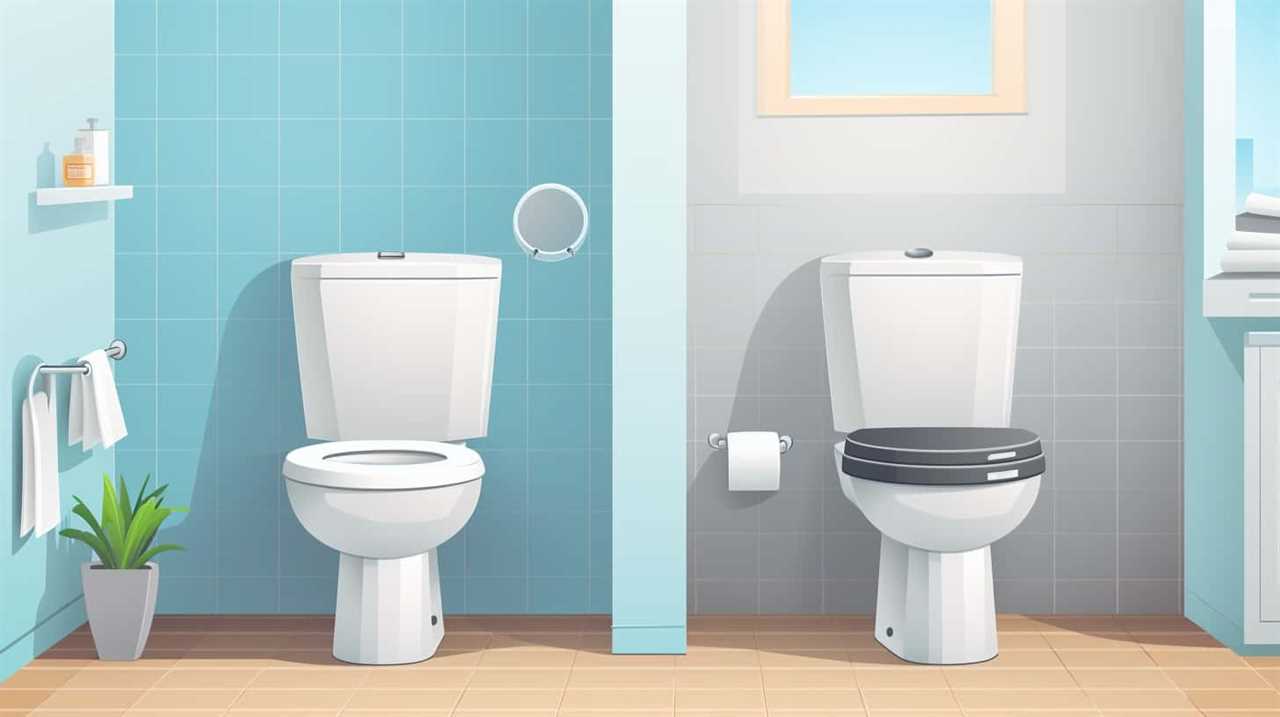We have all experienced the moment – caught in annoyance, gazing at a toilet that refuses to flush. It’s a prevalent issue that often renders us feeling powerless and uncertain about our next steps.
But fear not, because in this article, we’re going to break down the reasons why your toilet might not be flushing inside. From clogged drains to faulty flappers, we’ll explore the technical issues that could be causing this inconvenience.
So, let’s dive in and master the art of a smoothly flushing toilet.
Key Takeaways
- A common reason for a toilet not flushing inside is a clogged drain or toilet, often caused by foreign objects or excessive toilet paper.
- A faulty flapper or flush valve can also lead to weak or incomplete flushes, and these components should be checked for wear or damage and replaced if necessary.
- Low water level in the tank can hinder flushing performance, resulting in incomplete waste removal and weak flushes.
- A malfunctioning fill valve can cause low water levels and inconsistent flushing, and the water level can be adjusted using the adjustment screw or the fill valve may need to be replaced.
Clogged Drain or Toilet
When the toilet won’t flush inside, it’s often due to a clogged drain or toilet that needs immediate attention. A clogged drain occurs when foreign objects or excessive toilet paper obstruct the flow of water. This can lead to a toilet bowl overflow, causing inconvenience and potential water damage. To address this issue, a toilet plunger can be used.

Place the plunger over the drain hole and create a tight seal. Apply firm, repetitive downward pressure to create suction and dislodge the blockage. If the clog persists, it may be necessary to use a plumbing snake or seek professional assistance.
Now, let’s move on to the next section where we’ll discuss the potential causes of a faulty flapper or flush valve.
Faulty Flapper or Flush Valve
Moving on from a clogged drain or toilet, another possible reason why your toilet won’t flush inside is a faulty flapper or flush valve.
The flapper and flush valve are crucial components of your toilet’s flushing mechanism. The flapper is a rubber seal that sits at the bottom of the tank and is responsible for releasing water into the bowl when you flush. The flush valve, on the other hand, controls the flow of water from the tank to the bowl.

If either of these components is faulty or damaged, it can lead to a weak or incomplete flush. To troubleshoot this issue, check the flapper and flush valve for any signs of wear or damage. Replace them if necessary to ensure proper toilet maintenance.
Now let’s move on to another possible cause: low water level in the tank.
Low Water Level in the Tank
To address the issue of low water level in the tank, we need to understand its potential impact on the toilet’s flushing performance. The water level in the toilet tank plays a crucial role in creating the necessary force to flush waste effectively.
Here are three reasons why a low water level in the tank can hinder the flushing process:

- Insufficient water volume: A low water level means there isn’t enough water available for a powerful flush, resulting in incomplete waste removal.
- Weak siphon action: The siphon action, which creates the flushing force, relies on a sufficient amount of water. A low water level can weaken this action, leading to a weak flush.
- Inadequate refill: A low water level in the toilet tank may indicate a problem with the water supply, resulting in an inadequate refill after each flush.
Understanding the impact of low water level in the tank is crucial to diagnosing and resolving flushing issues.
In the next section, we’ll discuss the malfunctioning fill valve and its role in maintaining the proper water level in the tank.
Malfunctioning Fill Valve
Our toilet may not flush properly inside if the fill valve is malfunctioning. The fill valve is responsible for refilling the tank with water after each flush. If it isn’t functioning correctly, it can lead to issues such as low water levels or inconsistent flushing.
One possible solution is to adjust the water level in the tank. This can be done by turning the adjustment screw on the fill valve clockwise to increase the water level or counterclockwise to decrease it.

However, if adjusting the water level doesn’t resolve the problem, it may be necessary to replace the fill valve altogether. Replacing the fill valve involves shutting off the water supply, removing the old valve, and installing a new one according to the manufacturer’s instructions.
Blocked Vent Stack or Drainage System
If the fill valve isn’t the issue, another possible reason why your toilet may not flush properly inside is a blocked vent stack or drainage system. This can cause a buildup of pressure and prevent the water from flowing smoothly.
To help you understand the importance of vent stack maintenance and regular drain cleaning, consider the following:
- Vent stack maintenance: The vent stack is responsible for maintaining proper air pressure in the drainage system. Over time, debris and blockages can accumulate, leading to air restrictions and poor flushing performance. Regular maintenance, such as clearing obstructions and ensuring proper ventilation, can prevent these issues.
- Importance of regular drain cleaning: Regular drain cleaning helps prevent clogs and maintains the optimal flow of water. Accumulated debris, such as hair, soap scum, and grease, can obstruct the drainage system and hinder flushing. By scheduling periodic drain cleaning, you can ensure that your toilet functions efficiently and prevents any potential blockages.
Frequently Asked Questions
How Can I Fix a Clogged Drain or Toilet?
To fix a clogged drain or toilet, we can try using toilet plunger techniques or drain cleaning chemicals. These methods help clear blockages and restore proper flushing. It’s important to follow instructions carefully for effective results.

What Are the Signs of a Faulty Flapper or Flush Valve?
When troubleshooting a faulty flapper or flush valve, signs to look for include leaking water and weak flushing power. To fix this, check for any cracks or tears in the flapper and ensure the flush valve is properly sealed.
How Can I Increase the Water Level in the Tank?
To increase water level in the tank, there are several ways to troubleshoot low water pressure. Regular toilet maintenance is important for optimal functionality.
What Are the Common Causes of a Malfunctioning Fill Valve?
When troubleshooting a malfunctioning fill valve, common causes include a blocked inlet valve, a faulty float mechanism, or a worn-out diaphragm. To replace a toilet fill valve, follow these steps for a successful installation.
How Do I Know if My Vent Stack or Drainage System Is Blocked?
Signs of a blocked vent stack or drainage system include gurgling sounds, slow drainage, or foul odors. To unclog effectively, use a plunger or drain snake. If the problem persists, call a professional plumber.

Conclusion
In conclusion, when faced with a toilet that won’t flush, it’s important to consider several potential causes. These can include:
- A clogged drain or toilet
- A faulty flapper or flush valve
- A low water level in the tank
- A malfunctioning fill valve
- A blocked vent stack or drainage system
By addressing these issues promptly, one can ensure a properly functioning toilet and avoid any further inconvenience or plumbing complications.
Remember, a well-maintained toilet is essential for a smooth and efficient household.










